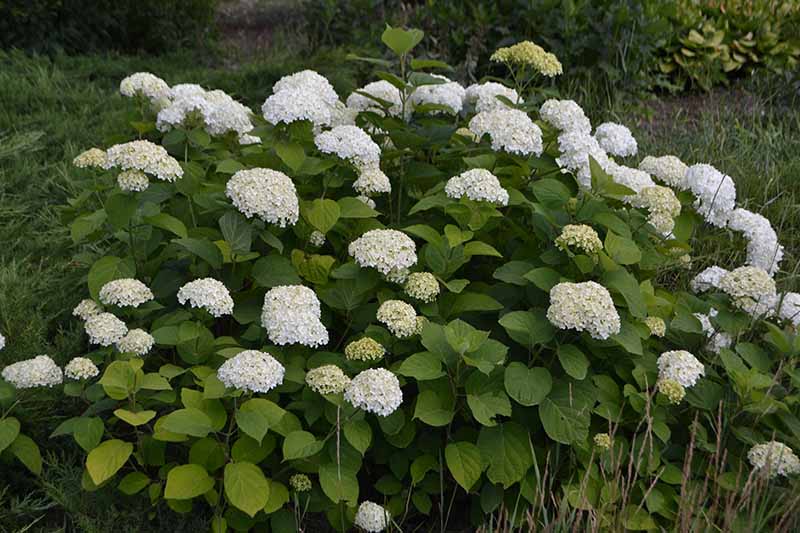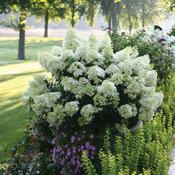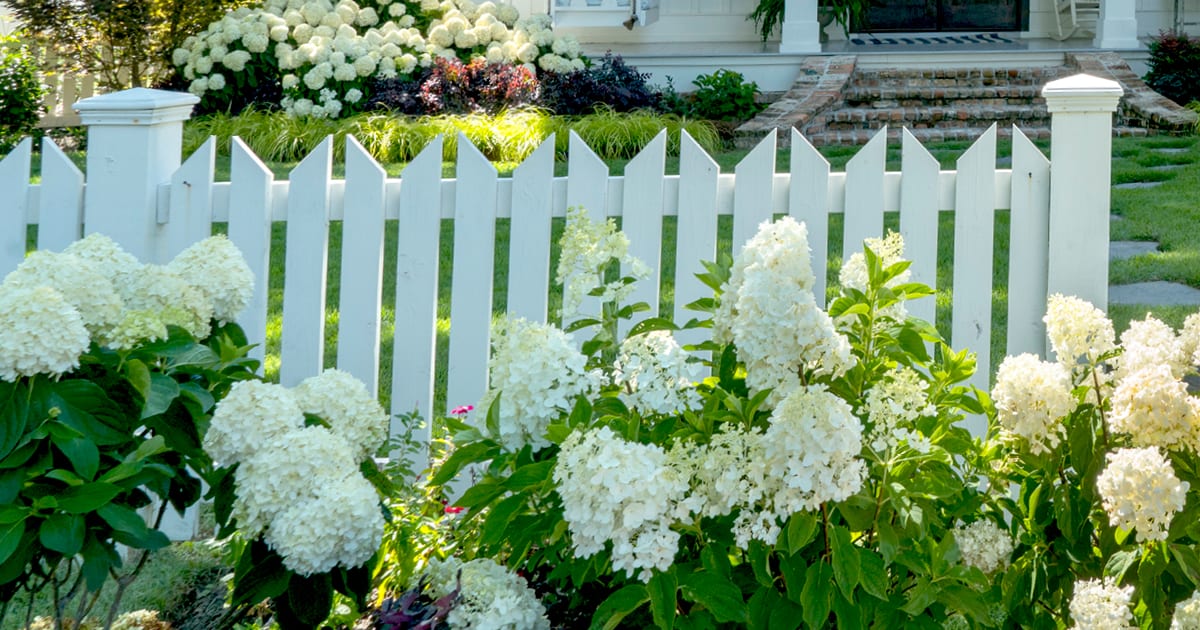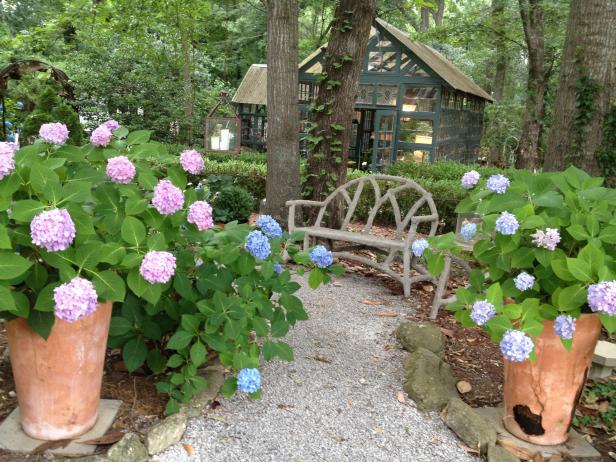Hydrangea Borders: A Beautiful And Easy Way To Add Color To Your Landscape
Hydrangea Borders: A Beautiful and Easy Way to Add Color to Your Landscape
Hydrangeas are a popular choice for landscaping because they are beautiful, versatile, and relatively easy to care for. They come in a variety of colors, sizes, and shapes, so you can find the perfect hydrangeas to complement your home and your garden.
One of the best ways to use hydrangeas is to create a hydrangea border. Hydrangea borders can be used to add color, interest, and definition to your landscape. They can also be used to create a focal point or to screen out unsightly areas.
Here are some tips for creating a hydrangea border:
- Choose the right location. Hydrangeas need partial shade to full shade, so choose a location that gets at least some shade during the day. They also need well-drained soil.
- Decide on the size and shape of your border. Hydrangea borders can be as small as a few feet long or as long as several yards. They can be straight, curved, or even serpentine.
- Choose the right hydrangeas. There are many different types of hydrangeas available, so take some time to choose the ones that you like the best. Consider the color, size, and shape of the flowers when making your selection.
- Plant your hydrangeas. Hydrangeas should be planted in the spring or fall. Dig a hole that is twice as wide and as deep as the root ball of the hydrangea. Backfill the hole with soil, making sure to tamp it down firmly. Water the hydrangea well.
- Fertilize your hydrangeas. Hydrangeas need to be fertilized regularly. Use a balanced fertilizer, such as 10-10-10, in the spring and again in the fall.
- Water your hydrangeas. Hydrangeas need to be watered regularly, especially during hot, dry weather.
- Prune your hydrangeas. Hydrangeas should be pruned in the spring, after they have finished blooming.
With a little planning and effort, you can create a beautiful and easy-to-care-for hydrangea border that will add color and interest to your landscape for years to come.
Here are some additional tips for creating a hydrangea border:
- For a more formal look, plant your hydrangeas in a straight line. For a more informal look, plant them in a curved or serpentine pattern.
- To create a focal point, plant a taller hydrangea in the center of your border. Surround it with smaller hydrangeas of different colors.
- To screen out unsightly areas, plant a row of hydrangeas along the edge of the area you want to hide.
- To add color and interest to your border, plant other types of flowers and shrubs along with your hydrangeas. Some good companion plants for hydrangeas include azaleas, hostas, ferns, and lilies.
- For a year-round interest, plant evergreen hydrangeas in your border. These hydrangeas will keep their leaves and flowers throughout the winter, providing color and interest even when other plants are dormant.
With a little creativity and effort, you can create a hydrangea border that is both beautiful and functional.
Hydrangeas are beautiful flowering shrubs that can add a touch of elegance to any garden. If you're thinking about planting a hydrangea border, there are a few things you need to know. First, you'll need to choose the right type of hydrangea for your climate. Hydrangeas come in a variety of sizes and colors, so you can find the perfect ones to complement your existing landscape.
Once you've chosen your hydrangeas, you need to decide where to plant them. Hydrangeas prefer partial shade, so avoid planting them in full sun. They also need moist, well-drained soil. Once you've found the perfect spot, dig holes that are twice as wide as the root ball of your hydrangeas. Add some compost to the bottom of each hole, then carefully place your hydrangeas in the hole and backfill with soil. Water your hydrangeas deeply after planting.
Hydrangeas are relatively easy to care for. They need regular watering, especially during the first year after planting. You should also fertilize them once a year in the spring. Hydrangeas are susceptible to a few diseases, but with proper care, they should thrive for many years to come.
If you're looking for more information about hydrangea borders, I recommend visiting . This website has a wealth of information on hydrangeas, including planting, care, and troubleshooting tips. You can also find a variety of hydrangea border designs to inspire you.
FAQ of hydrangea border
What are the different types of hydrangea borders?
There are two main types of hydrangea borders: formal and informal. Formal hydrangea borders are typically symmetrical and geometric, while informal hydrangea borders are more natural and flowing.
Formal hydrangea borders are often used in front of patios or walkways, while informal hydrangea borders are often used to create a sense of privacy or to soften the edges of a garden.
What are the best hydrangeas for borders?
When choosing hydrangeas for a border, it is important to consider the size of the mature plant, the color of the flowers, and the amount of sun and shade the plant needs.
Some of the best hydrangeas for borders include:
- Hydrangea arborescens, also known as smooth hydrangea, is a hardy shrub that can grow up to 6 feet tall and wide. It blooms in white or pink flowers in the summer.

- Hydrangea paniculata, also known as panicle hydrangea, is a taller shrub that can grow up to 10 feet tall. It blooms in white, pink, or blue flowers in the summer.

- Hydrangea macrophylla, also known as bigleaf hydrangea, is a large shrub that can grow up to 8 feet tall and wide. It blooms in blue, pink, or white flowers in the summer.

How to plant hydrangeas in a border?
To plant hydrangeas in a border, dig a hole that is twice the size of the root ball. Add some compost or manure to the soil and mix it well. Place the hydrangea in the hole and backfill with soil. Water the hydrangea well and mulch around the base.
How to care for hydrangeas in a border?
Hydrangeas need regular watering, especially during the first year after planting. They also benefit from annual applications of fertilizer. In the fall, you can prune hydrangeas to shape them and remove any dead or damaged branches.
How to prevent hydrangea problems?
The most common hydrangea problems are pests and diseases. To prevent pests, you can spray your hydrangeas with an insecticidal soap or neem oil. To prevent diseases, you can water your hydrangeas at the base and avoid overhead watering.
Image of hydrangea border
- Hydrangea border in front of a white picket fence. The hydrangeas are in full bloom, with their large, colorful flowers. The fence adds a touch of classic elegance to the border.

- Hydrangea border along a walkway. The hydrangeas are planted in a row along the walkway, creating a lush, green barrier. The flowers are in various shades of pink, blue, and white.

- Hydrangea border in a garden. The hydrangeas are planted in a large, circular border in the middle of a garden. The flowers are a mix of different colors, creating a vibrant display.

- Hydrangea border in a flower bed. The hydrangeas are planted in a flower bed along the edge of a lawn. The flowers are a mix of white and pink, and they provide a splash of color to the otherwise green lawn.

- Hydrangea border in a woodland setting. The hydrangeas are planted in a shady spot in a woodland setting. The flowers are a mix of blue and white, and they contrast beautifully with the dark green foliage of the trees.

Post a Comment for "Hydrangea Borders: A Beautiful And Easy Way To Add Color To Your Landscape"